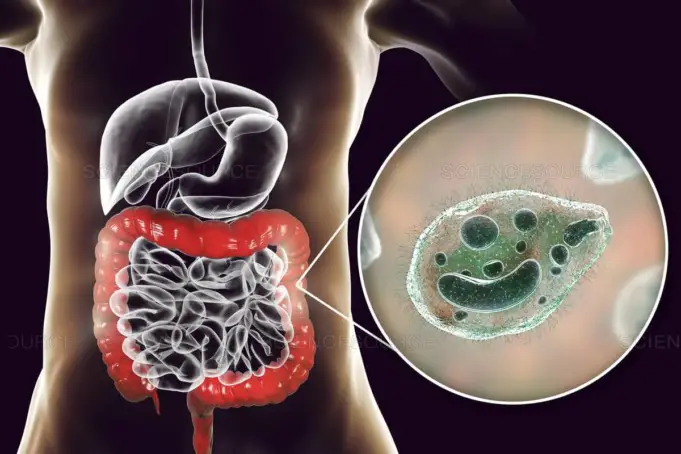Balantidiasis is a rare intestinal infection caused by the single-celled parasite known as Balantidium coli. Pigs are the primary hosts of the parasite but on occasion, although rare, infects humans.
However, pigs are not the only hosts of the parasite; rats have also been shown to be reservoirs of Balantidium coli.
Some infected people may be asymptomatic or even have a mild case of the infection, while some others may experience more severe symptoms resembling an acute inflammation of the intestine.
The disease is characterized by symptoms similar to those of others that cause intestinal inflammation such as amoebiasis. In 1904, the first case of Balantidiasis was reported in the Philippines.
The infection is currently distributed around the world, although it is typically found in tropical areas like Brazil. The disease affects both males and females, but less than 1% of the general population is affected.
Since pigs are the primary hosts of the parasite, the transmission of the parasite and infection frequently occurs in areas where humans and pigs mix.
Causes of Balantidiasis
Balantidiasis is caused by the single-celled (protozoan) parasite Balantidium coli. The parasite may be transmitted directly to humans who come in contact with pig feces or indirectly by drinking contaminated water.
Also, poor nutrition, a compromised immune system, or other ailments may make a person susceptible to more severe symptoms of this disease.
Signs and Symptoms of Balantidiasis
Most people with the infection do not exhibit visible symptoms (asymptomatic) or present mild symptoms. Some people may become acutely sick with abdominal pain, nausea, bloody diarrhea, abnormally high temperatures, and vomiting.
This may result in dehydration and extreme exhaustion, especially when the parasite attacks the intestinal lining causing inflammation and possibly causing ulcer of the intestines.
In extremely severe cases, the ulcers may be deep enough to perforate the intestinal wall, resulting in peritonitis which is the inflammation of the membrane that lines the abdomen (peritoneum). The ulcer may sometimes diminish the function of the lungs.
The symptoms of balantidiasis are similar to others that cause intestinal inflammation. Comparison may be needed when carrying out a diagnosis. Some of the disorders include:
Crohn’s Disease
an inflammatory bowel disease that causes the inflammation of the digestive tract. Symptoms of Crohn’s disease include vomiting, nausea, loss of appetite, fever, night sweat, diarrhea, abdominal pain, and rectal bleeding.
Irritable Bowel Syndrome (IBS)
also known as Spastic Colon, it is a common digestive disorder involving both the small intestine and the large bowel. Symptoms of IBS include abdominal pain, constipation, bloating, nausea, headache, and diarrhea.
People living with Irritable Bowel Syndrome who have painless diarrhea may experience an urgent need to defecate.
Ulcerative Colitis
Is an acute inflammatory bowel disease that causes ulcers and inflammation in the digestive tract. The disorder is characterized by diarrhea and blood in the stools due to multiple, irregular ulcerations of the bowel.
The early symptoms of ulcerative colitis may include a general feeling of exhaustion and fatigue. There may be some abdominal discomfort, as well as a change in the frequency and consistency of stools.
Other symptoms of this disorder may include cramping, abdominal pain, and the urgent need to have a bowel movement (tenesmus). Ulcerative colitis is also associated with loss of appetite and weight loss.
Chronic Erosive Gastritis
This is an inflammatory disorder characterized by multiple lesions in the mucosal lining of the stomach. Symptoms of chronic erosive gastritis may include a burning feeling in the stomach, nausea, vomiting, loss of appetite and general weakness.
Severe cases of the disorder may lead to bleeding from the stomach, which results in blood loss (anemia).
Other disorders that have symptoms that are similar to those of Balantidiasis include:
- Amoebiasis
- Shigella dysentery,
- Yersinia enterocolitica infection
- Chronic fungal bowel infections,
- Intestinal tuberculosis,
- Pseudomembranous colitis caused by excessive use of antibiotics.
Diagnosis
The diagnosis of balantidiasis can be a complicated process, partly because the associated symptoms may or may not be present.
The diagnosis of the infection can, however, be considered when a patient has diarrhea along with a history of recent exposure to pigs (since pigs are the primary hosts), contact with infected persons, or anal sex.
Furthermore, diagnosis can be carried out by the microscopic examination of stools in search of cysts.
Treatment and Prevention
Balantidiasis can be treated using tetracycline, metronidazole, diiodohydroxyquin and carbarsone. Preventing balantidiasis would require effective personal and community hygiene.
Some measures that can be taken include
- Purifying drinking water
- Proper handling of food
- Careful disposal of human feces
- Monitoring balantidiasis patients.













